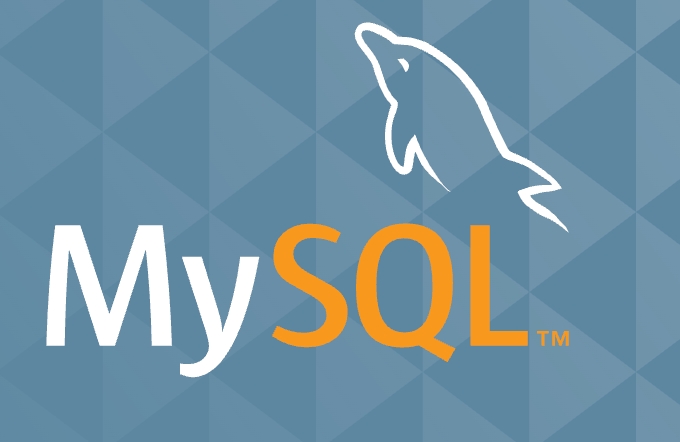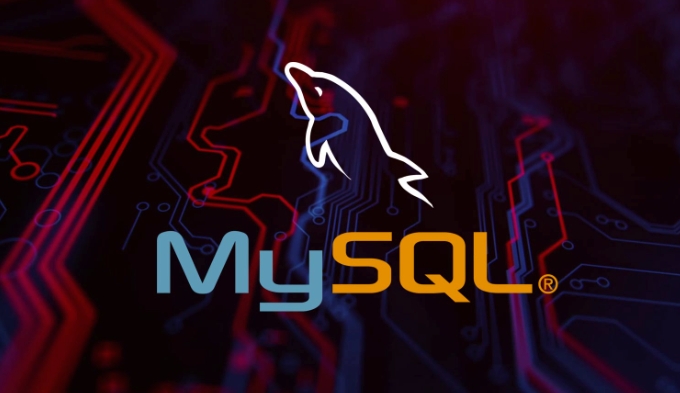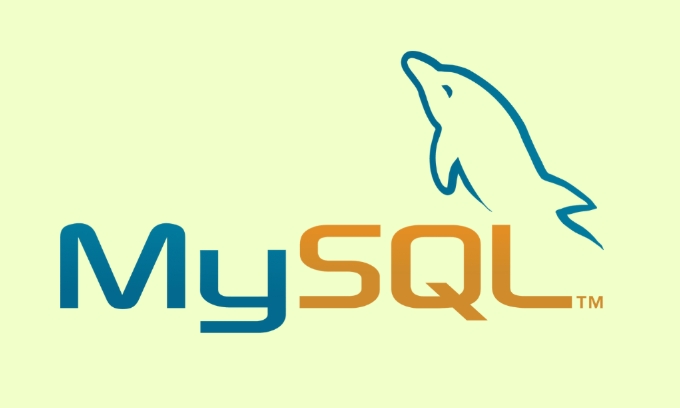Leveraging MySQL JSON Schema Validation for Data Integrity
Jul 26, 2025 am 05:32 AMJSON Schema Validation is a mechanism provided by MySQL to ensure compliance with JSON field data structures. 1. It allows you to define JSON Schema when creating a table to constrain the field format; 2. Use CHECK constraints to achieve automatic verification with the JSON_SCHEMA_VALID function; 3. You can specify the field type, required items and formats such as email legality; 4. If you do not comply with Schema when inserting or updating data, you will report an error; 5. Applicable to scenarios where the data structure is often changed but requires structural constraints; 6. It requires support from MySQL 8.0.22 and above; 7. Note that verification will affect the write performance, and the format keyword is optional verification.

MySQL JSON Schema Validation is an effective way to ensure that the JSON data structure is in line with expectations at the database level. Especially when dealing with flexible data structures, this verification mechanism can help us avoid dirty data entering the system and improve overall data quality.

What is JSON Schema Validation?
Simply put, it is to define a JSON Schema to constrain the data format of a JSON type field when creating a table. For example, you can specify that a field must be a string, or that a key must exist. In this way, when inserting or updating data, MySQL will automatically check whether the data meets the Schema, and an error will be reported if it does not meet.
For example: You want to store user information, where the user attribute is a JSON field, you want each user to have an email field, and the email must be in a legal format. At this time, you can use JSON Schema Validation.

How to set up JSON Schema Validation?
To use this function, you need to use CHECK constraints to match the JSON_SCHEMA_VALID function when defining the table structure. Here is an example of a basic table building statement:
CREATE TABLE users (
id INT PRIMARY KEY AUTO_INCREMENT,
data JSON,
CHECK(JSON_SCHEMA_VALID('{
"$schema": "https://json-schema.org/draft/2020-12/schema",
"type": "object",
"required": ["email"],
"properties": {
"email": { "type": "string", "format": "email" },
"name": { "type": "string" }
}
}', data))
);In this example:

- The
datafield is of type JSON - Through
CHECKconstraints, MySQL will verify thatdatacomplies with the given Schema - If the inserted data does not have
emailor theemailformat is incorrect, the insertion will fail
What should be noted is:
- MySQL version 8.0.22 and above supports JSON Schema Validation
- Schema must be a legal JSON format string
- The verification process has a certain impact on performance, especially in scenarios where frequent writing is done
When is it suitable to use?
JSON Schema Validation is best used in the following scenarios:
- Data structures often change, but certain structural constraints are required
- Use JSON fields to store configuration items, metadata, or extension fields
- I hope to perform data verification at the database level to reduce the burden on the application level
For example, you have an order system, and there are some optional fields in the order information, but some core fields (such as order number and user ID) must exist. At this time, it is very appropriate to use Schema to verify.
However, if your data structure is already very fixed, it is recommended to use the traditional field definition method, so that the performance and query efficiency will be higher.
Tips and precautions
-
formatkeywords in Schema (such as email, uri) are optionally verified in MySQL, that is, MySQL does not necessarily strictly verify according to the format, such as email only checks whether it is a string. - You can manually test whether the data complies with Schema through the
JSON_SCHEMA_VALIDfunction, which is convenient for debugging. - If you have multiple JSON fields that need to be validated, you need to set CHECK constraints for each field separately
- Frequent use of verification on large JSON data is not recommended, as it will affect write performance
Basically that's it. Although JSON Schema Validation is not omnipotent, it can effectively improve data quality and reduce application layer verification logic in appropriate scenarios.
The above is the detailed content of Leveraging MySQL JSON Schema Validation for Data Integrity. For more information, please follow other related articles on the PHP Chinese website!

Hot AI Tools

Undress AI Tool
Undress images for free

Undresser.AI Undress
AI-powered app for creating realistic nude photos

AI Clothes Remover
Online AI tool for removing clothes from photos.

Clothoff.io
AI clothes remover

Video Face Swap
Swap faces in any video effortlessly with our completely free AI face swap tool!

Hot Article

Hot Tools

Notepad++7.3.1
Easy-to-use and free code editor

SublimeText3 Chinese version
Chinese version, very easy to use

Zend Studio 13.0.1
Powerful PHP integrated development environment

Dreamweaver CS6
Visual web development tools

SublimeText3 Mac version
God-level code editing software (SublimeText3)
 How to use PHP to develop a Q&A community platform Detailed explanation of PHP interactive community monetization model
Jul 23, 2025 pm 07:21 PM
How to use PHP to develop a Q&A community platform Detailed explanation of PHP interactive community monetization model
Jul 23, 2025 pm 07:21 PM
1. The first choice for the Laravel MySQL Vue/React combination in the PHP development question and answer community is the first choice for Laravel MySQL Vue/React combination, due to its maturity in the ecosystem and high development efficiency; 2. High performance requires dependence on cache (Redis), database optimization, CDN and asynchronous queues; 3. Security must be done with input filtering, CSRF protection, HTTPS, password encryption and permission control; 4. Money optional advertising, member subscription, rewards, commissions, knowledge payment and other models, the core is to match community tone and user needs.
 How to set environment variables in PHP environment Description of adding PHP running environment variables
Jul 25, 2025 pm 08:33 PM
How to set environment variables in PHP environment Description of adding PHP running environment variables
Jul 25, 2025 pm 08:33 PM
There are three main ways to set environment variables in PHP: 1. Global configuration through php.ini; 2. Passed through a web server (such as SetEnv of Apache or fastcgi_param of Nginx); 3. Use putenv() function in PHP scripts. Among them, php.ini is suitable for global and infrequently changing configurations, web server configuration is suitable for scenarios that need to be isolated, and putenv() is suitable for temporary variables. Persistence policies include configuration files (such as php.ini or web server configuration), .env files are loaded with dotenv library, and dynamic injection of variables in CI/CD processes. Security management sensitive information should be avoided hard-coded, and it is recommended to use.en
 Automating MySQL Deployments with Infrastructure as Code
Jul 20, 2025 am 01:49 AM
Automating MySQL Deployments with Infrastructure as Code
Jul 20, 2025 am 01:49 AM
To achieve MySQL deployment automation, the key is to use Terraform to define resources, Ansible management configuration, Git for version control, and strengthen security and permission management. 1. Use Terraform to define MySQL instances, such as the version, type, access control and other resource attributes of AWSRDS; 2. Use AnsiblePlaybook to realize detailed configurations such as database user creation, permission settings, etc.; 3. All configuration files are included in Git management, support change tracking and collaborative development; 4. Avoid hard-coded sensitive information, use Vault or AnsibleVault to manage passwords, and set access control and minimum permission principles.
 How to use PHP to develop product recommendation module PHP recommendation algorithm and user behavior analysis
Jul 23, 2025 pm 07:00 PM
How to use PHP to develop product recommendation module PHP recommendation algorithm and user behavior analysis
Jul 23, 2025 pm 07:00 PM
To collect user behavior data, you need to record browsing, search, purchase and other information into the database through PHP, and clean and analyze it to explore interest preferences; 2. The selection of recommendation algorithms should be determined based on data characteristics: based on content, collaborative filtering, rules or mixed recommendations; 3. Collaborative filtering can be implemented in PHP to calculate user cosine similarity, select K nearest neighbors, weighted prediction scores and recommend high-scoring products; 4. Performance evaluation uses accuracy, recall, F1 value and CTR, conversion rate and verify the effect through A/B tests; 5. Cold start problems can be alleviated through product attributes, user registration information, popular recommendations and expert evaluations; 6. Performance optimization methods include cached recommendation results, asynchronous processing, distributed computing and SQL query optimization, thereby improving recommendation efficiency and user experience.
 mysql revoke privileges from user
Jul 16, 2025 am 03:56 AM
mysql revoke privileges from user
Jul 16, 2025 am 03:56 AM
To recycle MySQL user permissions using REVOKE, you need to specify the permission type, database, and user by format. 1. Use REVOKEALLPRIVILEGES, GRANTOPTIONFROM'username'@'hostname'; 2. Use REVOKEALLPRIVILEGESONmydb.FROM'username'@'hostname'; 3. Use REVOKEALLPRIVILEGESONmydb.FROM'username'@'hostname'; 3. Use REVOKE permission type ON.*FROM'username'@'hostname'; Note that after execution, it is recommended to refresh the permissions. The scope of the permissions must be consistent with the authorization time, and non-existent permissions cannot be recycled.
 How to build an online customer service robot with PHP. PHP intelligent customer service implementation technology
Jul 25, 2025 pm 06:57 PM
How to build an online customer service robot with PHP. PHP intelligent customer service implementation technology
Jul 25, 2025 pm 06:57 PM
PHP plays the role of connector and brain center in intelligent customer service, responsible for connecting front-end input, database storage and external AI services; 2. When implementing it, it is necessary to build a multi-layer architecture: the front-end receives user messages, the PHP back-end preprocesses and routes requests, first matches the local knowledge base, and misses, call external AI services such as OpenAI or Dialogflow to obtain intelligent reply; 3. Session management is written to MySQL and other databases by PHP to ensure context continuity; 4. Integrated AI services need to use Guzzle to send HTTP requests, safely store APIKeys, and do a good job of error handling and response analysis; 5. Database design must include sessions, messages, knowledge bases, and user tables, reasonably build indexes, ensure security and performance, and support robot memory
 Securing MySQL Connections with SSL/TLS Encryption
Jul 21, 2025 am 02:08 AM
Securing MySQL Connections with SSL/TLS Encryption
Jul 21, 2025 am 02:08 AM
Why do I need SSL/TLS encryption MySQL connection? Because unencrypted connections may cause sensitive data to be intercepted, enabling SSL/TLS can prevent man-in-the-middle attacks and meet compliance requirements; 2. How to configure SSL/TLS for MySQL? You need to generate a certificate and a private key, modify the configuration file to specify the ssl-ca, ssl-cert and ssl-key paths and restart the service; 3. How to force SSL when the client connects? Implemented by specifying REQUIRESSL or REQUIREX509 when creating a user; 4. Details that are easily overlooked in SSL configuration include certificate path permissions, certificate expiration issues, and client configuration requirements.
 How to develop AI intelligent form system with PHP PHP intelligent form design and analysis
Jul 25, 2025 pm 05:54 PM
How to develop AI intelligent form system with PHP PHP intelligent form design and analysis
Jul 25, 2025 pm 05:54 PM
When choosing a suitable PHP framework, you need to consider comprehensively according to project needs: Laravel is suitable for rapid development and provides EloquentORM and Blade template engines, which are convenient for database operation and dynamic form rendering; Symfony is more flexible and suitable for complex systems; CodeIgniter is lightweight and suitable for simple applications with high performance requirements. 2. To ensure the accuracy of AI models, we need to start with high-quality data training, reasonable selection of evaluation indicators (such as accuracy, recall, F1 value), regular performance evaluation and model tuning, and ensure code quality through unit testing and integration testing, while continuously monitoring the input data to prevent data drift. 3. Many measures are required to protect user privacy: encrypt and store sensitive data (such as AES






